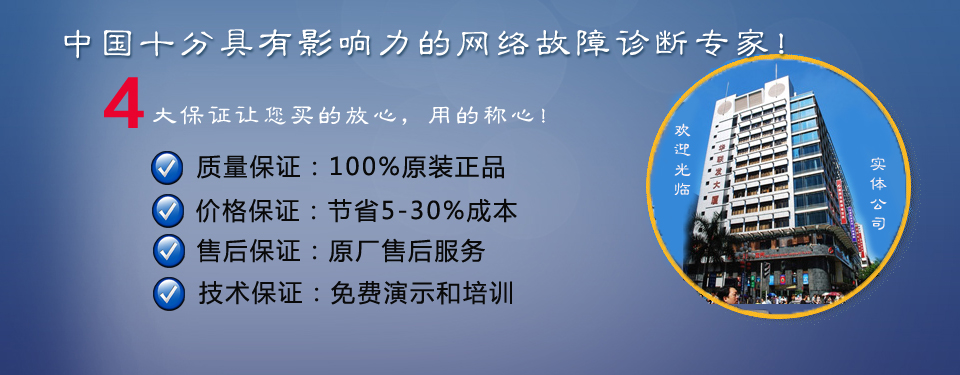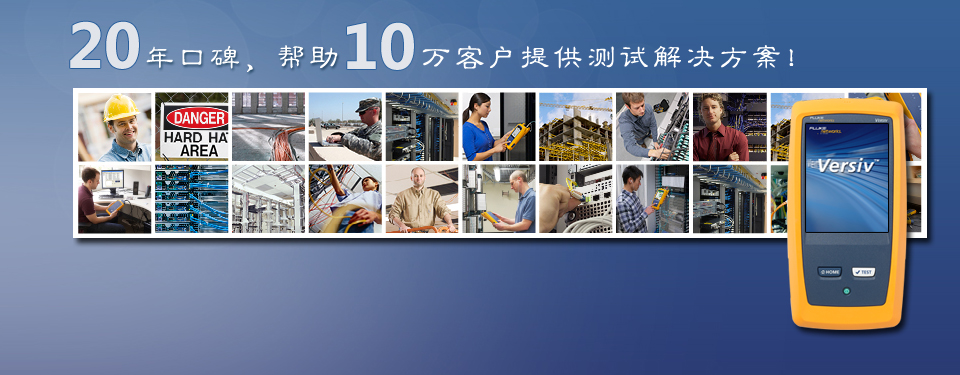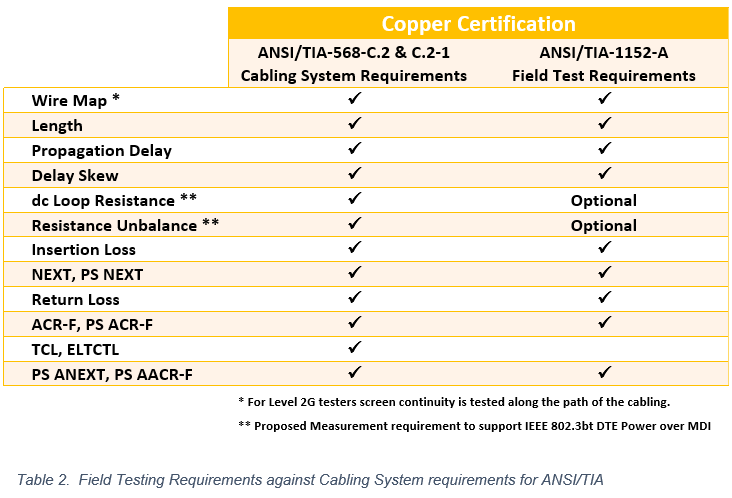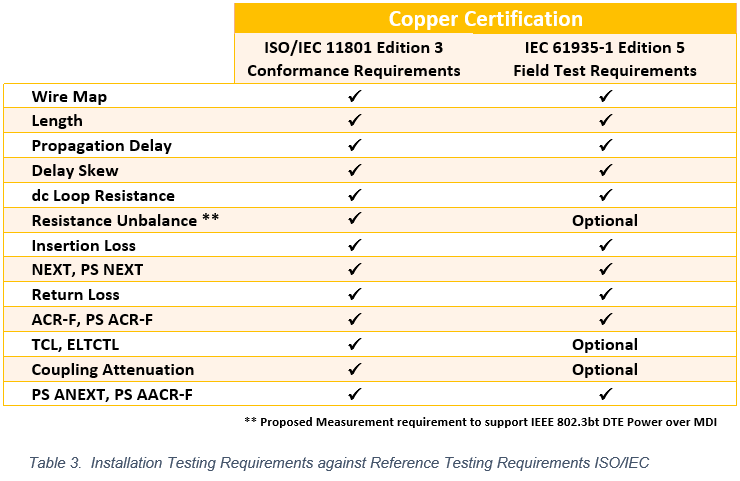Q: What is Category 8 Cabling?
A: Category 8 cabling is a new category of cabling that has been developed to support 25GBASE-T and 40GBASE-T applications developed by the IEEE.
Q: Who developed the Category 8 standard?
A: The Category 8 standard was developed by the ANSI/TIA-568 standards body, more specifically, the TR42.7 committee. The document that details Category 8 cabling is ANSI/TIA-568-C.2-1, and was published in November 2016 as a standard, therefore Category 8 is no longer in a draft format.
Q: What is unique about Category 8 cabling as opposed to Category 6A cabling or previous balanced twisted pair copper cabling categories?
A: Category 8 cabling has a greater throughput capability; it can support transmission of data up to 40Gbps over balanced twisted pair copper cabling. The solution is a shielded solution–there is no unshielded variant. Therefore, careful attention must be paid to shield terminations when installing the solution. All previous categories of balanced twisted pair copper cabling supported a Permanent Link Length of 90m (295’) and a channel of 100m (328’). Category 8 has a maximum Permanent Link Length of 24m (78’) and a maximum Channel length of 30m (100’) when supporting 25Gbps and 40Gbps speeds. Category 8 cabling can support data speeds of 10Gbps and lower at a full 100m (328’) Channel configuration. ?When field-testing Category 8 solutions, the installation is tested from 1MHz to 2000MHz, whereas Category 6A balanced twisted pair copper cabling is only field tested from 1MHz to 500MHz.
Q: What connectors does Category 8 cabling use to perform at these higher frequencies?
A: The ANSI/TIA Category 8 solution utilizes an 8 position modular 8 connector (commonly known as RJ45) and was designed to be backward compatible with the existing 8 position modular connectors that are utilized in structured cabling from Category 5e through to Category 6A. This was a key requirement from the active equipment manufacturers to maintain compatibility with the billions of RJ45 connectors in use around the world. The international standards body is following a similar approach, their Class I links are made up of Category 8.1 components, the connectors being backward compatible with the commonly used 8 position modular style (RJ45).
Q: So what else are the international standards bodies doing concerning Category 8?
A: The international standards bodies ISO and IEC have designated two cabling variants to support 25Gbps and 40Gbps; they are Category 8.1 and Category 8.2. As stated earlier, Category 8.1 components are used to construct Class I links. They are backward compatible with the RJ45 connector interface for categories 6A, 6 and 5e as specified in ISO/IEC 11801 and EN 50173. Category 8.2 components are used to construct Class II links. Category 8.2 components are backward compatible with components used to construct Class F and Class FA links.?Category 8.2 connector interfaces ARE NOT BACKWARD COMPATIBLE with the RJ45 jacks of existing cabling. The international standards bodies ISO and IEC are expected to publish a new version of ISO/IEC 11801 (Edition 3) during 2017.
Table 1. ?Category 8 Solution Types Comparison Chart
Q: How can I make sure my newly installed Category 8 solution will work?
A: The standards bodies have developed new field testing standards to support these new types of Category 8 cabling links. The ANSI/TIA body published in November 2016 a newly revised field test standard. The document is ANSI/TIA-1152-A, and is an update of the older ANSI/TIA-1152 document. The new document covers the testing of Category 8 installations and all the previous Categories of 6A, 6 and 5e, in the one document. The document provides test limits for making the tests and accuracy levels for the field tester carrying out these tests. A field tester for Category 8 testing needs to meet or exceed the Level 2G accuracy requirements. Further, the international standards bodies of ISO and IEC are expected to publish a revised version of ISO/IEC 61935-1, to be Edition 5, later in 2017. This document is currently in draft format and will support the field-testing of the new Class I and Class II links, plus the testing of the existing Class D to Class FA links. This document will also introduce a new accuracy class for a field tester, to be known as Level VI.
Q: Do these new field test standards require new tests or different styles of tests?
A: While the required tests will be familiar to anyone who has performed field testing on balanced copper twisted pair cabling, it needs to be understood that the accuracy requirements for the tester performing these tests has been tightened, plus the frequency range extended to 2000MHz, as mentioned previously, Level 2G Accuracy for the ANSI/TIA-1152-A standard, and Level VI for the draft ISO/IEC 61935-1 Edition 5 standard.
The ANSI/TIA-1152-A standard has added several new tests to the field-testing requirements, those tests are optional for the moment, plus they have clarified the wire map requirement for Level 2G testers when measuring shields for Category 8 cabling. For a Level 2 G tester, because Category 8 cabling is shielded, there is also a requirement to check the continuity of the screen to the remote end of the cabling. The actual wording is “… for Level 2G testers it is understood that the screen continuity is tested along the path of the cabling”. (Refer to section 4.2.2 of ANSI/TIA-1152-A)? This is a new requirement that only the most advanced field testers can provide. ?The optional tests that the TIA has included are; dc Loop Resistance (already a requirement in ISO/IEC 61935-1), dc Resistance Unbalance within a Pair and dc Resistance Unbalance between pairs. These resistance balance measurements will be required to certify a link is capable of supporting the proposed IEEE802.3bt Power over Ethernet Plus Plus (PoE ++) standard.
Q: Are the two field test standards similar or will I need two different test regimes?
A: Yes, the two test standards are very similar, below are two comparison tables showing ANSI/TIA and ISO/IEC requirements for field-testing. One field test instrument and one test regime will cover all requirements.







 新一代中文手持式测试仪 – 省时省力。
新一代中文手持式测试仪 – 省时省力。
 新一代中文手持式测试仪 – 省时省力。
新一代中文手持式测试仪 – 省时省力。
 新一代手持式网络分析仪 – 省时省力。
新一代手持式网络分析仪 – 省时省力。
 新一代快速OTDR测试仪 – 省时省力。
新一代快速OTDR测试仪 – 省时省力。


